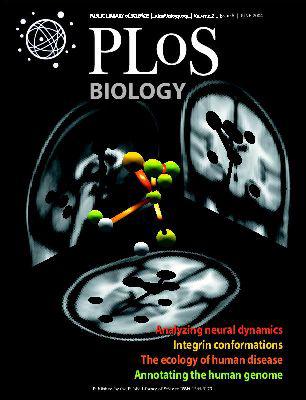Collective production of hydrogen sulfide gas enables budding yeast lacking MET17 to overcome their metabolic defect
IF 7.8
1区 生物学
Q1 BIOCHEMISTRY & MOLECULAR BIOLOGY
引用次数: 0
Abstract
Assimilation of sulfur is vital to all organisms. In S. cerevisiae, inorganic sulfate is first reduced to sulfide, which is then affixed to an organic carbon backbone by the Met17 enzyme. The resulting homocysteine can then be converted to all other essential organosulfurs such as methionine, cysteine, and glutathione. This pathway has been known for nearly half a century, and met17 mutants have long been classified as organosulfur auxotrophs, which are unable to grow on sulfate as their sole sulfur source. Surprisingly, we found that met17Δ could grow on sulfate, albeit only at sufficiently high cell densities. We show that the accumulation of hydrogen sulfide gas underpins this density-dependent growth of met17Δ on sulfate and that the locus YLL058W (HSU1) enables met17Δ cells to assimilate hydrogen sulfide. Hsu1 protein is induced during sulfur starvation and under exposure to high sulfide concentrations in wild-type cells, and the gene has a pleiotropic role in sulfur assimilation. In a mathematical model, the low efficiency of sulfide assimilation in met17Δ can explain the observed density-dependent growth of met17Δ on sulfate. Thus, having uncovered and explained the paradoxical growth of a commonly used “auxotroph,” our findings may impact the design of future studies in yeast genetics, metabolism, and volatile-mediated microbial interactions.集体产生硫化氢气体可使缺乏 MET17 的芽殖酵母克服代谢缺陷
硫的同化对所有生物都是至关重要的。在酿酒酵母中,无机硫酸盐首先被还原成硫化物,然后由Met17酶附着在有机碳主链上。由此产生的同型半胱氨酸可以转化为所有其他必需的有机硫,如蛋氨酸、半胱氨酸和谷胱甘肽。这一途径已经被发现了近半个世纪,而met17突变体长期以来一直被归类为有机硫营养不良体,它们不能以硫酸盐作为唯一的硫源生长。令人惊讶的是,我们发现met17Δ可以在硫酸盐上生长,尽管只有在足够高的细胞密度下。我们发现,硫化氢气体的积累支撑了met17Δ在硫酸盐上的这种密度依赖性生长,并且YLL058W (HSU1)位点使met17Δ细胞能够吸收硫化氢。在野生型细胞中,Hsu1蛋白在硫饥饿和高浓度硫环境下被诱导,该基因在硫同化中具有多向性作用。在数学模型中,met17Δ中硫化物同化的低效率可以解释met17Δ对硫酸盐的密度依赖性生长。因此,发现并解释了一种常用的“营养不良菌”的矛盾生长,我们的发现可能会影响酵母遗传学、代谢和挥发物介导的微生物相互作用的未来研究设计。
本文章由计算机程序翻译,如有差异,请以英文原文为准。
求助全文
约1分钟内获得全文
求助全文
来源期刊

PLoS Biology
生物-生化与分子生物学
CiteScore
14.40
自引率
2.00%
发文量
359
审稿时长
3 months
期刊介绍:
PLOS Biology is an open-access, peer-reviewed general biology journal published by PLOS, a nonprofit organization of scientists and physicians dedicated to making the world's scientific and medical literature freely accessible. The journal publishes new articles online weekly, with issues compiled and published monthly.
ISSN Numbers:
eISSN: 1545-7885
ISSN: 1544-9173
 求助内容:
求助内容: 应助结果提醒方式:
应助结果提醒方式:


